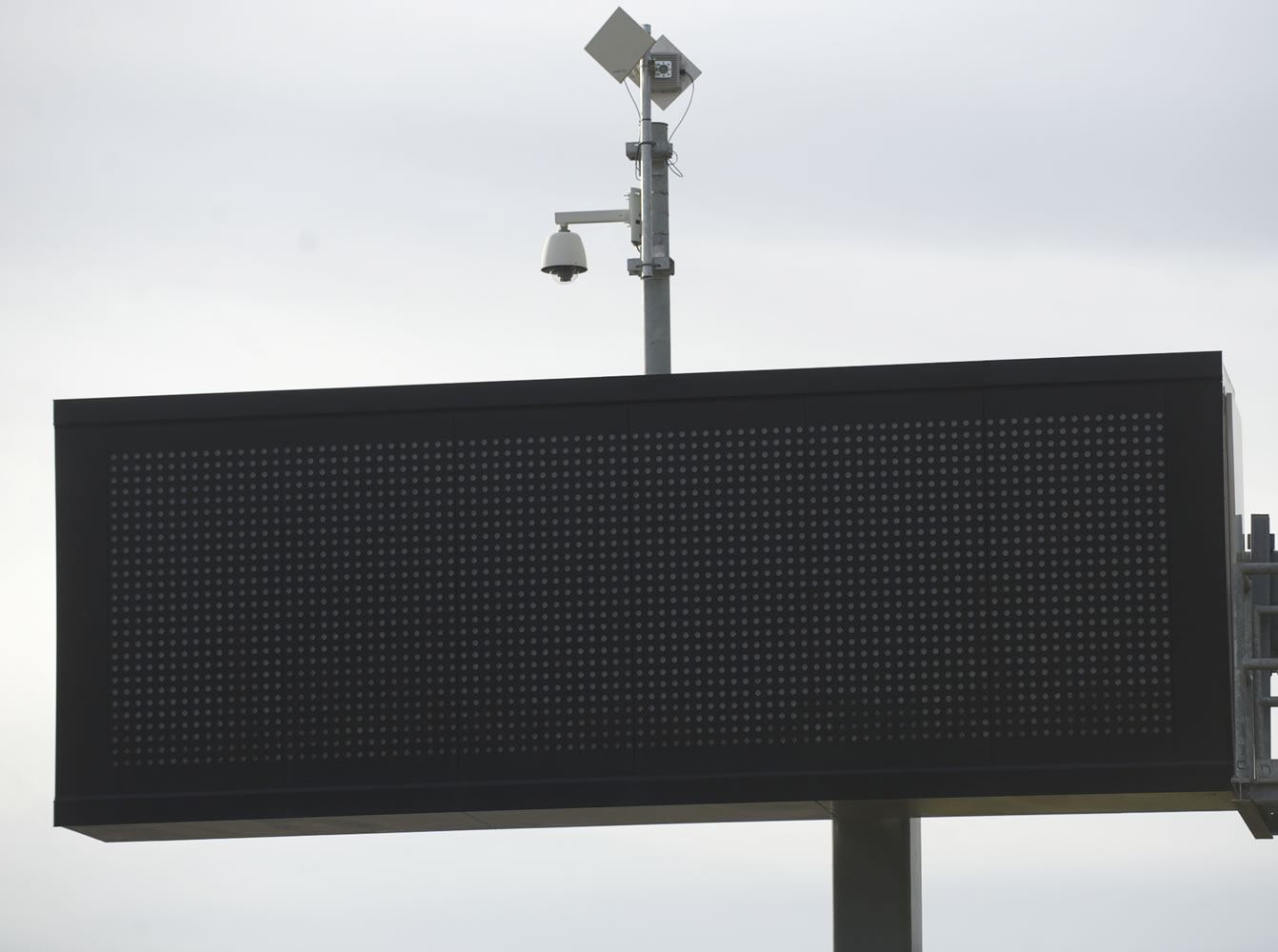Local officials want to know what motorists think of the electronic signs they drive by on the freeways.
The signs, called variable message signs, publicize Amber alerts, warn drivers about bridge lifts, construction and accidents that are blocking lanes or causing congestion — but do drivers find the message system effective?
When Clark County Sheriff’s Sgt. Shane Gardner and Max Ault, former legislative assistant to Rep. Tim Probst, noticed these signs often relayed the message over and over again, they decided to do something about it.
They sent a letter with signatures from local legislators and police chiefs to Washington’s transportation secretary, Paula Hammond, talking about expanding electronic messaging and tailoring messages to what’s happening locally.
Before announcing her resignation recently, Hammond backed the idea and
gave Gardner and Ault the go-ahead to start a pilot program in Clark County.
In their original vision, the pair looked to provide information on road conditions, offer safe driving tips and warn drivers about crime trends through the signs.
Gardner and Ault met with Marion Swendsen, Clark County’s Target Zero manager, last week to brainstorm specific messages and develop a database that outlines the logistics of when, where and for how long the messages will run.
Overusing signs or posting the same ongoing message can have a “numbing” effect, causing drivers to ignore the messages.
The Washington State Department of Transportation wants the pilot program to align with the county’s Target Zero goal of eliminating traffic fatalities and serious injuries by 2030. The group is digging into traffic data to see if certain stretches of the freeway have their own characteristic traffic problems, whether it’s drunken drivers, distracted driving or speeding. Each sign is controlled individually by WSDOT, and messages may be tailored to the sign’s location.
Statewide, WSDOT is deploying a new Blue Alert system, similar to Amber Alerts, that enlists the public’s help in finding suspected cop killers. The department is also working with the Oregon Department of Transportation to provide freeway travel times for rush-hour commuters.
Patty Hastings: 360-735-4513; http://www.twitter.com/col_cops; patty.hastings@columbian.com




